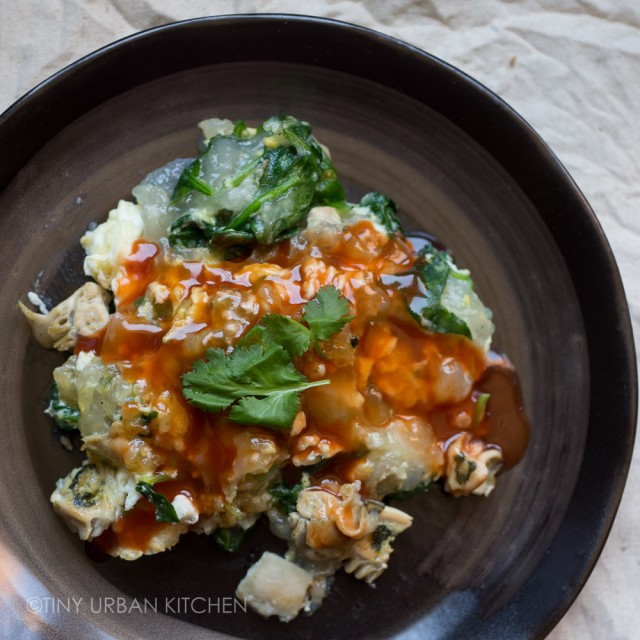
I am so excited to announce that I am featured on the front page of the Food section of the Boston Globe today (!).
I was thrilled and in utter disbelief when they contacted me about two weeks ago asking if I was interested in being featured. They said they were especially interested in my Taiwanese background and wanted to feature Taiwanese cuisine, which is a bit more unusual.
The writer Brooke came over to my home and we cooked Taiwanese food together. A Globe photographer, Lane, also came and took tons of photos. It was surreal. And yes, that's why I was working so hard to clean up my kitchen a couple weeks ago.
The article focuses on my Taiwanese roots and includes a recipe for the comforting Taiwanese meat sauce that Brooke and I made together.
In honor of the publication of the article, I thought it would be fun to make one of the most famous, iconic, and classic Taiwanese street dishes around: the Taiwanese Oyster Omelet.
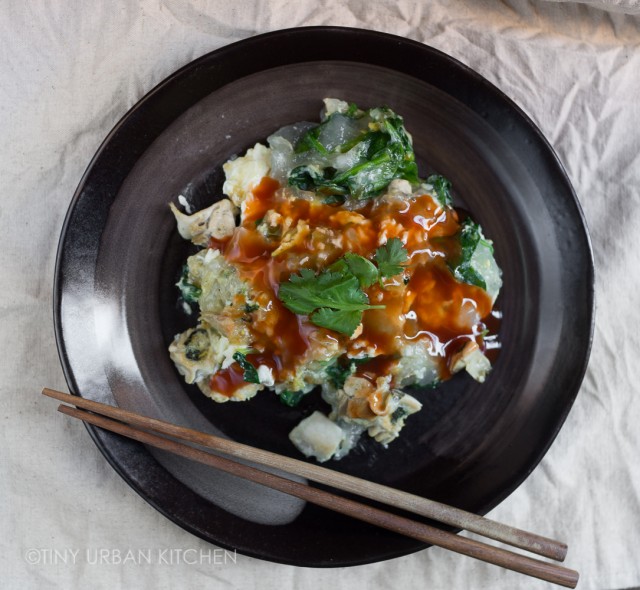
Known as "ô-á-chian" [SAY "uh-ah jen"] (蚵仔煎), which literally means oyster pan-fry, this small dish is especially popular in the night markets of Taiwan. You'll see people frying these up in open air stalls using fresh, local Taiwanese oysters (which are much, much smaller than the ones we're used to seeing in the U.S.).
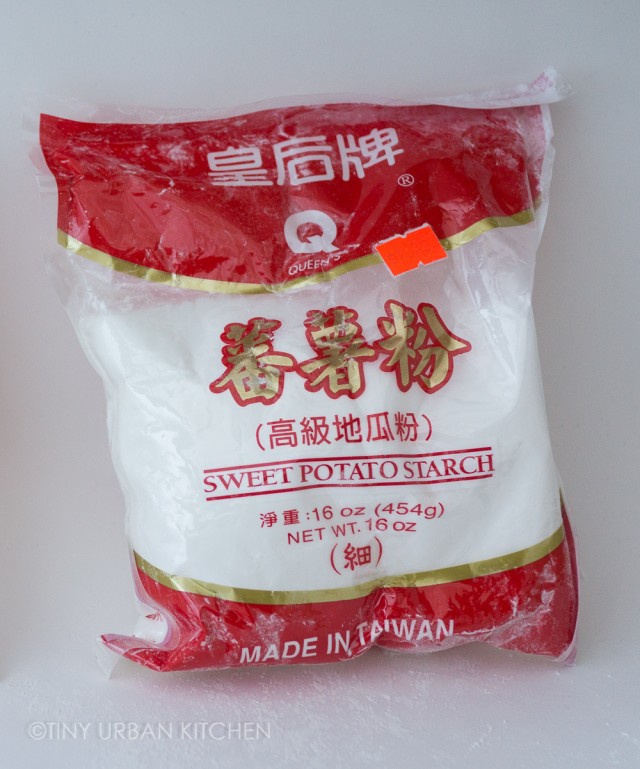
They key ingredient (aside from oysters, of course) is sweet potato starch, which you can easily find in Asian grocery stores. I have seen them in both Chinese and Korean grocery stores. Of course, there's also Amazon (affiliate link). The sweet potato starch gives the omelet its characteristic gelatinous, slight chewy "QQ" (as Taiwanese like to call it) texture. It's my favorite part of the oyster omelet.
I like this recipe because it's super easy, tasty, and came from Taiwanese moms in America who wrote the book Homestyle Cooking of Taiwan, my favorite source for Taiwanese recipes (updated version of the book available here).
There are two ways you can make the pancake. You can either mix together the egg with the sweet potato starch at the beginning (resulting in a more consistent looking omelet), or cook the two parts separately, resulting in more interesting textural contrast between "eggy" bits and gelatinous sweet potato starch bits. After trying both ways, I decided I preferred cooking them separately, but I'll show you both (since they're both still really tasty).
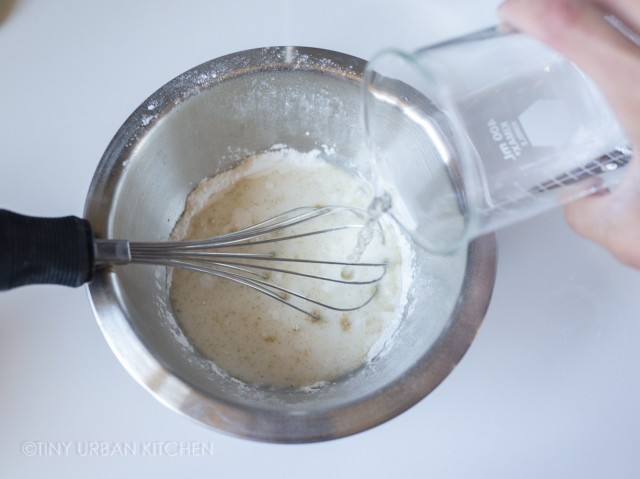
Mix together sweet potato starch with water. The ratio is essentially ½ cup sweet potato starch for every 1 cup of water and 2 eggs. Multiply according to how many pancakes/omelets you want to make (rule of thumb: approximately one egg per omelet). Add salt, white pepper, and optionally garlic powder.
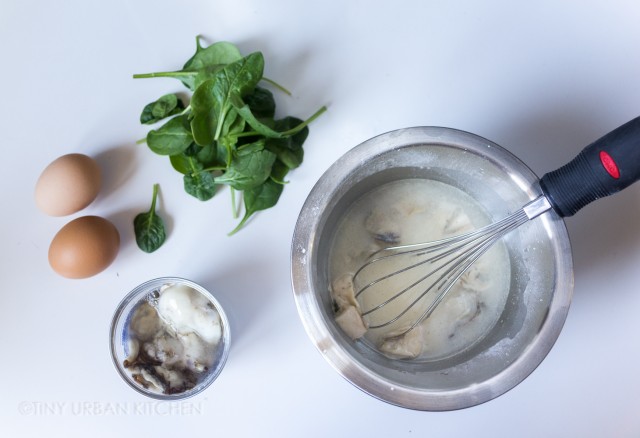
I decided to make two omelets, so I whisked together ½ cup sweet potato starch with 1 cup of water. If you're not confident about the freshness of your oysters, you may want to quickly stir fry them first. If you don't mind them being slightly raw-ish, feel free to cook everything together. I just threw my oysters right into the starch batter.
Because Taiwanese oysters tend to be much smaller than U.S. oysters, this recipe works better with smaller oyster pieces. If your oysters are too big, cut them into bite-sized pieces, about 1 to 1.5 inches wide.
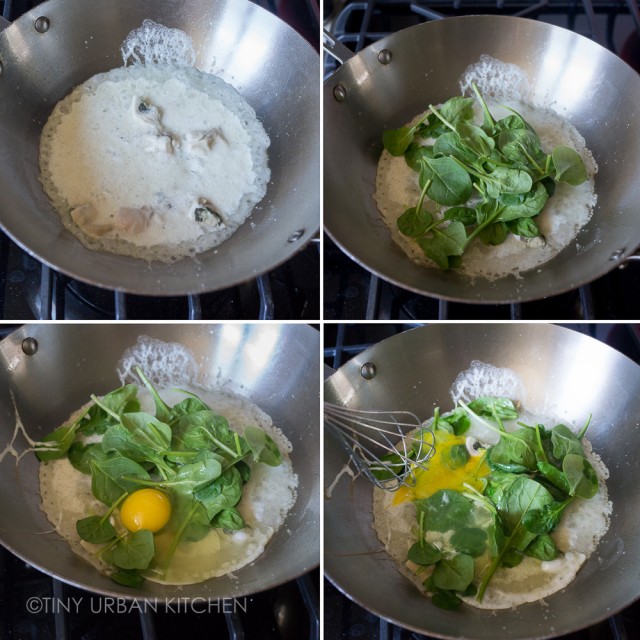
Make your omelets one at a time.
Heat up your wok really hot (on high!) and then add the oil. Make sure to be reasonably generous, since you don't want it to stick. High temperature cooking oil like grapeseed oil is preferable, but canola oil worked fine for me. Add one serving of the batter (in my case, half of the bowl) and let it sizzle for 10-15 seconds. Lower the heat to medium. After about 5 minutes (or when the batter looks cooked and is gelatinous/clear), add the green leafy vegetables. I used spinach, but you can use Taiwanese lettuce (A-choy), chrysanthemum greens (tong hao), or other quick cooking greens.
Add one egg and mix it around a bit if you want. You can leave the yolk whole too, if you prefer a slightly runnier yolk.
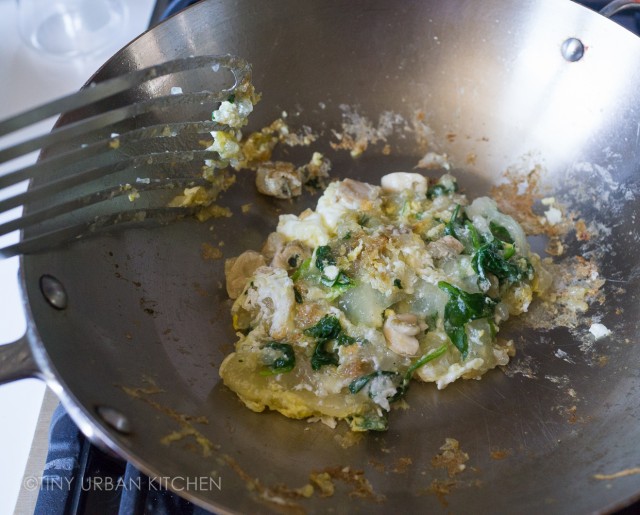
Flipping is challenging! A real pro would be able to flip it effortlessly probably with just some slick wrist action on the wok. I resorted to using a spatula, and still sort of made a mess, albeit a beautiful, glorious, tasty-looking mess.

Frankly, it almost doesn't matter how ugly it looks underneath, because you'll slather it with sweet chili sauce and fresh cilantro anyway.
Yum . . . .
And if you are really short on time and just feel like mixing the eggs and the sweet potato starch batter all together at once, that works too.
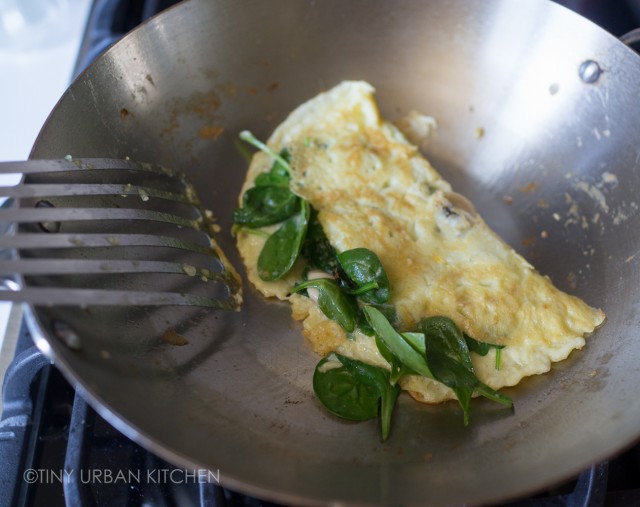
It's neater and easier to deal with, but the end result tastes more uniform. It still has a super soft, slightly springy gelatinous texture from the sweet potato starch, but it's not quite the same.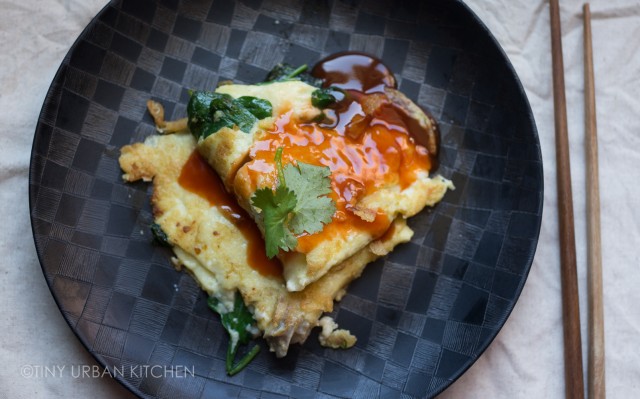
Honestly, both omelets were delicious. I do prefer the version that separates the eggs and sweet potato starch, mostly because of the interesting textural differences.
If you don't want to deal with oysters, you can easily make this dish vegetarian by omitting the oysters (it will taste different, but will still be good). I can imagine it tasting pretty good with cooked mushrooms! You can experiment and substitute other seafood as well. Ideally, from a textural perspective, oysters work the best because they have a similar texture - that slight gelatinous, gooeyness - that works well with the rest of the omelet.
Enjoy!
Stay tuned for a few more posts with some really simple, everyday home cooking recipes, courtesy of my mom. 🙂
- 6-8 small, raw oysters ( or 3-4 big ones, chopped into 1 inch pieces)
- ½ cup sweet potato starch
- 1 cup water
- ⅓ teaspoon salt
- ¼ teaspoon white pepper
- ¼ teaspoon garlic powder
- 2 teaspoon vegetable oil (e.g., grapeseed oil)
- 1 cup raw green leafy vegetable (e.g., Taiwanese A-choy, baby spinach, chrysanthemum leaves / tong hao)
- 2 eggs
- sweet chili sauce
- Rinse oysters in water and drain.
- Mix together sweet potato starch, water, salt, white pepper, and garlic powder in a bowl and whisk together until well combined. Add oysters to batter.
- Add oil to wok set on high heat.
- Add half the batter to the wok allowing it to sizzle briefly (about 10 seconds). Lower the heat to medium and let set until the starch pancake is translucent (about 5 minutes). Optionally flip halfway through.
- Add half of the leafy greens.
- Break one egg into the wok, optionally spreading the yolk around. When the egg is set, flip the entire pancake around. Don't worry if it breaks (these are hard to flip!). Cook for another minute or so, and then remove from the wok.
- Add sweet chili sauce and freshly chopped cilantro as garnish.
- Serve!
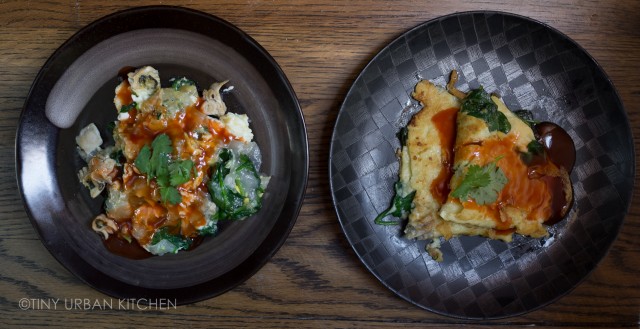


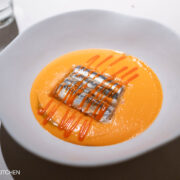








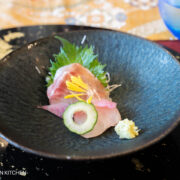
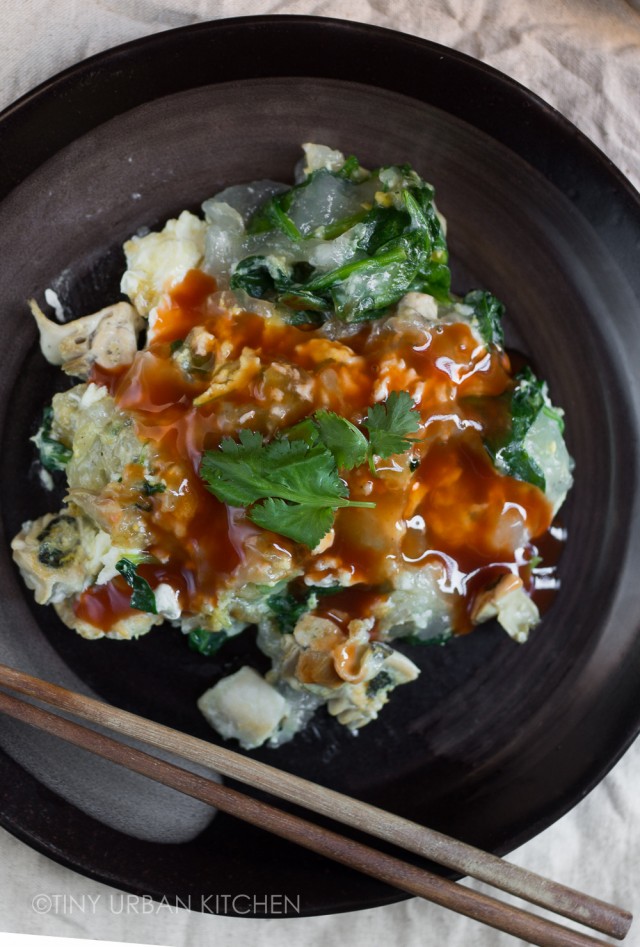

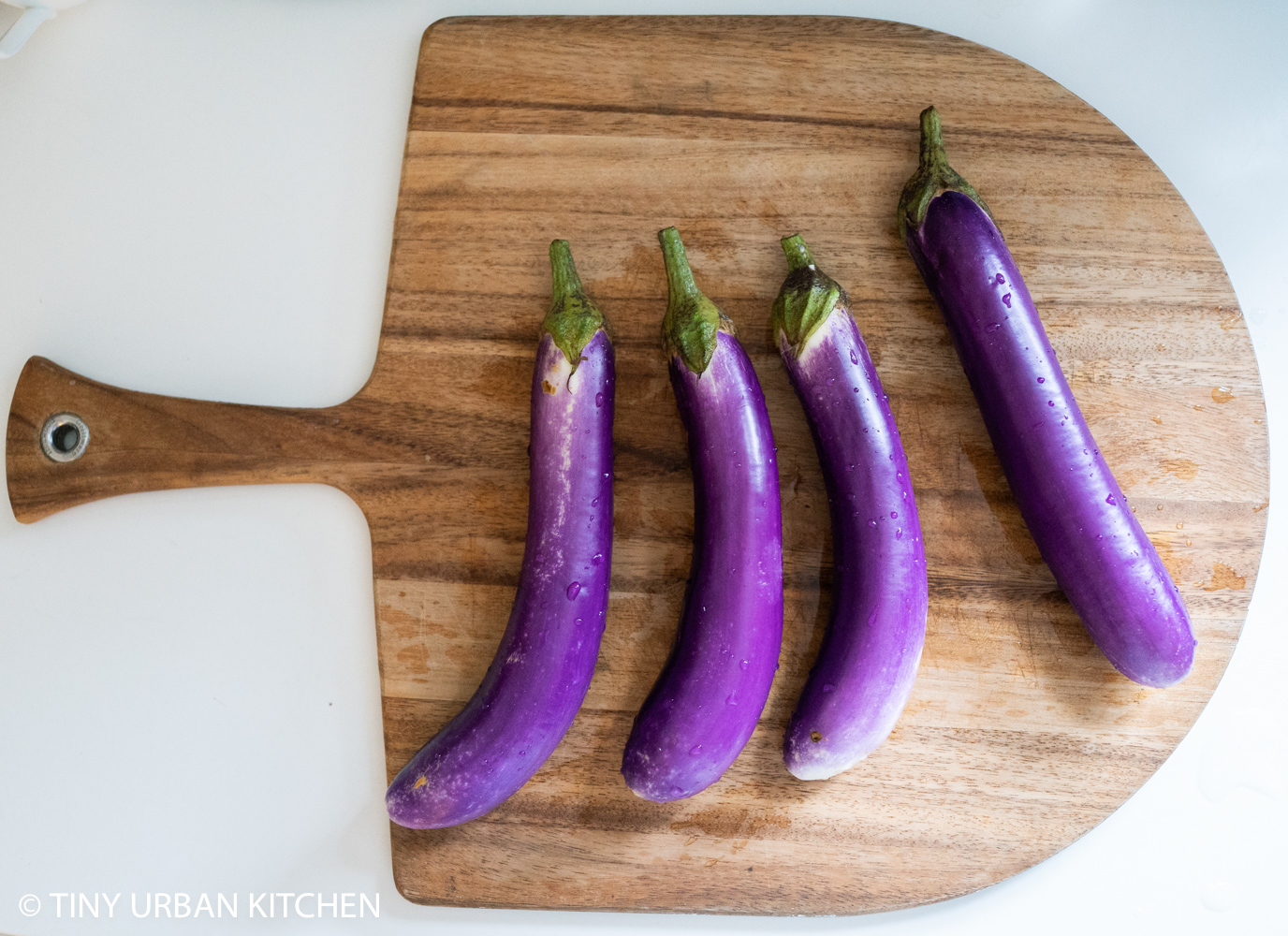
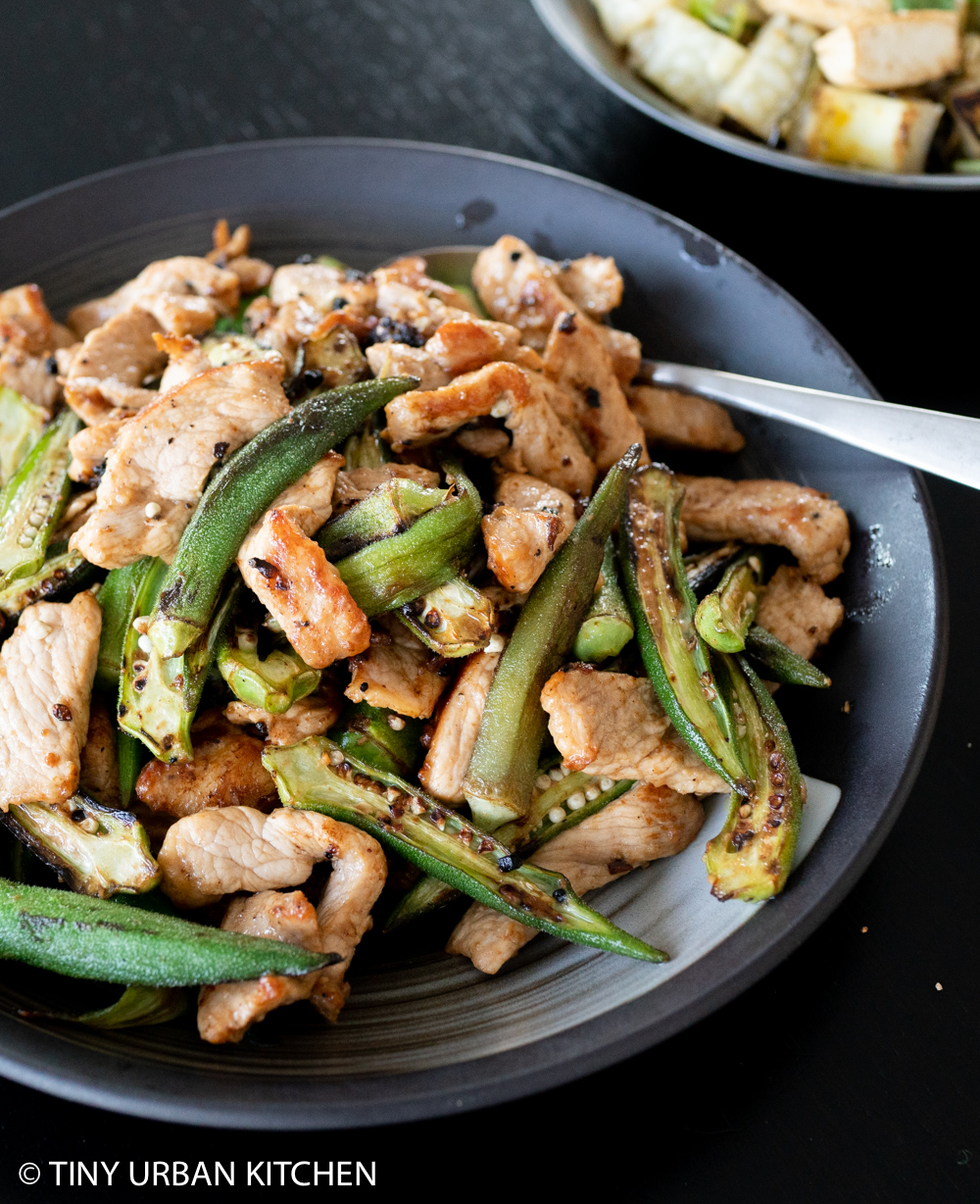
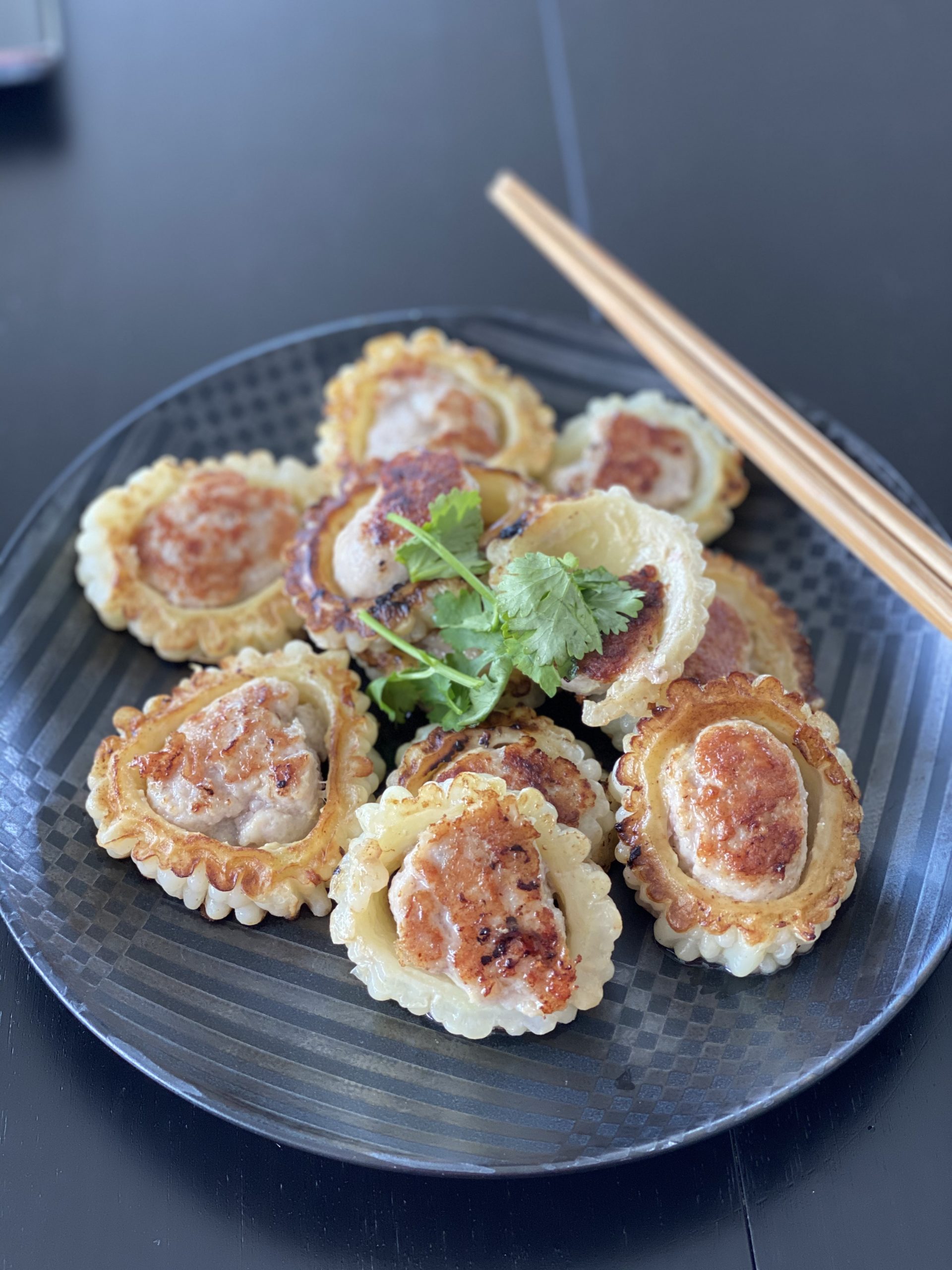
[…] see much since we started college. Kathy loves Oyster “cake”, she swore by it and so has other Taiwanese who enjoys them in night markets there. Being an overseas Fujianese Chinese, Kathy swore they […]